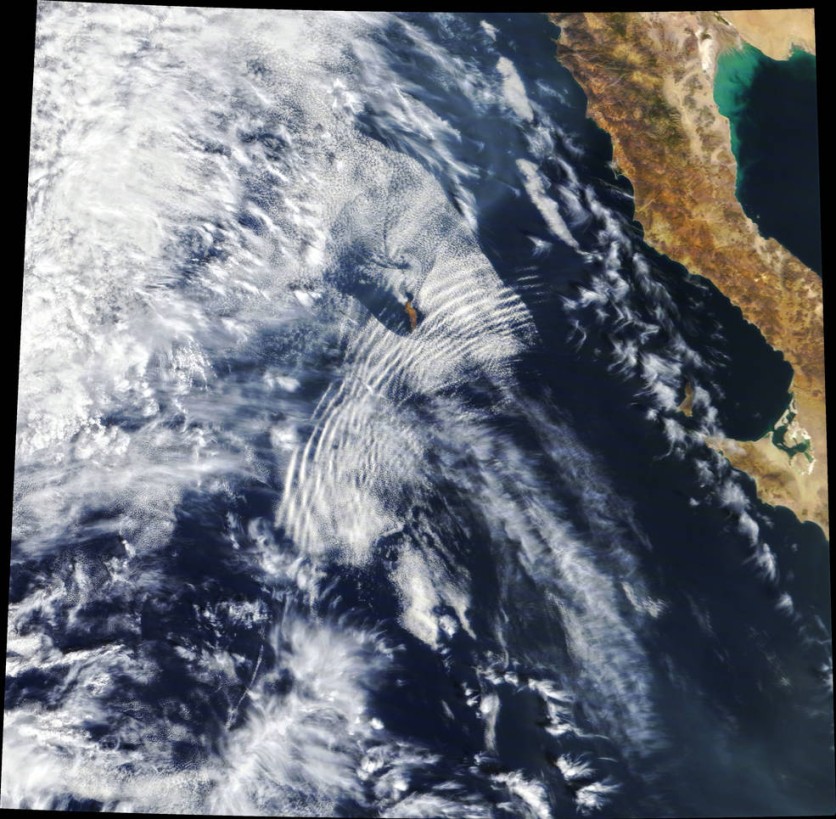NASA is gearing up for its Vorticity Experiment, or VortEx mission, which aims to study large hurricane-like swirls in the upper atmosphere.
The mission will launch on March 17, 2023, from the Andøya Space Center in Andenes, Norway.
The VortEx mission is searching for vortices that could be responsible for upper atmospheric weather patterns, which affect the entire globe.

Buoyancy Waves
High-altitude winds are responsible for buoyancy waves, which are giant pulses of energy that drive changes at Earth's interface to space.
Although buoyancy waves are common, their effects higher up in the atmosphere are still poorly understood, according to NASA.
The VortEx mission is designed to study buoyancy waves and the formation of vortices, which occur when buoyancy waves move upwards and pass through stable layers of our atmosphere. These vortices are too large to be measured using conventional approaches.
Gerald Lehmacher, a professor of physics at Clemson University in South Carolina, and principal investigator for the VortEx mission explained that buoyancy waves could come from approaching storm fronts or winds hitting the mountains and being sent upwards.
These disturbances cause denser air to be pushed upwards into a lower-pressure region, creating an oscillation that leads to waves propagating away from the disturbance.
The VortEx mission will use four rockets, launched two at a time. Each pair consists of one high-flyer and one low-flyer, launched a few minutes apart.
The high-flyer will measure winds at approximately 224 miles (360 kilometers) altitude, while the low-flyer will measure air density, which affects how vortices form, at approximately 87 miles (140 kilometers) altitude.
For a few minutes, each rocket will take measurements before falling back into the Norwegian Sea.
High-flying Rocket
The high-flying rocket will emit luminous clouds, which can be observed moving from the ground to monitor winds. The four sub-payloads that the VortEx crew will launch at once will each travel roughly 25 miles (40 kilometers) from the rocket before releasing their own clouds.
This will happen at four different instances during the flight, for a total of 16 clouds at different heights and distances, which will help show large-scale patterns.
The VortEx crew will keep an eye out for buoyant waves coming up from below. The Andya Space Center's Alomar Observatory is equipped with the appropriate ground-based radar and imaging capabilities to identify buoyancy waves as they occur.
The location is also home to the Scandinavian mountains, which span Norway's whole length from north to south. According to NASA, they are a regular source of buoyancy waves as winds rush against the mountains and shoot up into the sky.
If the team finds vortices, this would be a major advance in understanding higher atmospheric weather, which influences GPS navigation and communication signals.
The impacts of buoyant waves are still difficult to incorporate into current computer models of high atmospheric weather. As vortices are more predictable than buoyant waves themselves, they may hold the key to developing more precise models.
"Vortical structures follow certain universal rules that we could put into models to make them work at these scales," Lehmacher said.
"Instead of tracking individual buoyancy waves, you would just describe them with a spectrum of vortices."
Related Article : NASA May Receive $27.2 Billion Budget From White House in 2024

ⓒ 2025 TECHTIMES.com All rights reserved. Do not reproduce without permission.




